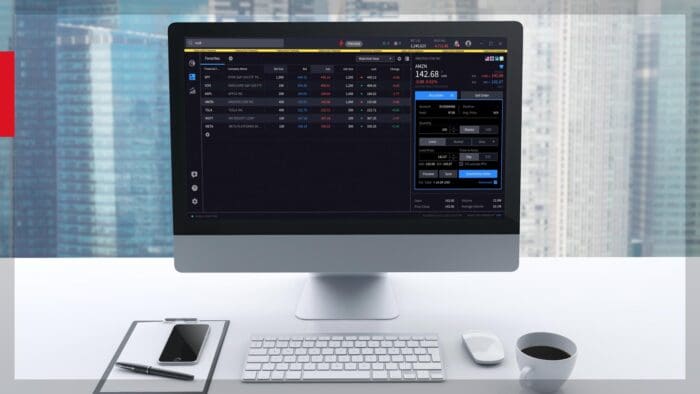June 7, 2024
“There’s something happening here…” – Buffalo Springfield, 1967
After a rather soft April in Laborland, May hiring activity firmed by 272,000! Moreover, revisions to last month’s data suggest April jobs came in closer to 165,000 (10,000 below the initial estimate). Meanwhile, the official unemployment rate jumped to 4.0% in May, though U6 remains anchored at 7.4%. It is worth noting that the string of sub-4% unemployment prints finally snapped last month after holding the line for more than two years! Wage pressures resumed in May with hourly earnings increasing by 0.4% MoM. We would posit that this report in tandem with other recent datapoints takes a summer rate cut off the table in the US, BUT it should not be construed as cause for panic at this stage. Many of the dynamics underpinning the US economy are reverting to pre-Covid norms (more on that below). Is the current effective fed funds rate truly restricting the economy as much as the Fed would like? Probably not. Is the current neutral rate for the US economy higher than the Fed thinks it should be? Probably. Is time still on Powell’s side? We tend to think so. Why? Let’s dig in.
Developed economies the world over are beginning to cool. This is a welcome sign for many central bankers, but consumers continue to grapple with higher prices for basic goods and services. The Bank of Canada went as far as to cut rates this week (25 bps), citing weaker than expected economic growth thus far in 2024. Inflation and housing affordability are still trouble spots for the Canadians (sound familiar?), BUT the bank has begun its easing cycle regardless. The ECB followed suit with its own rate cut of the same size the following day. Meanwhile, we continue to expect rate cuts in the US to commence in the back half of the year– perhaps as early as September. Taking a quick look under the hood of the domestic economy…
On the macroeconomic front American manufacturers and service providers continue to suggest that the US economy is chugging along albeit at a slower pace than in Q1 (May ISM Manufacturing 48.7, May ISM Non-Manufacturing 53.8). Importantly, the price component of each ISM report remains quite strong, corroborating the stickiness of pricing after a much higher than expected April core PPI print (+0.5% MoM). Last month’s BLS data show core CPI clipping along at a brisk 0.3% (seasonally adjusted) pace—not ideal but not out of control from the Fed’s perspective. Construction spending contracted to kick off Q2 and home sales are struggling– the gap between buyers and sellers is still quite wide in many markets. Meanwhile, the US labor outlook is softening with April job openings coming in at ~8M (JOLTS). Remember when there were ~2 job openings for every unemployed American? That figure is now closer to 1.2, which is important because labor demand is coming back in line with pre-pandemic norms (equilibrium in Laborland?). Of course, there are pockets of relative strength and weakness in each economic environment. We would point out that surveys among US college graduates indicate a broadening lack of confidence in corporate job postings. Meanwhile, government figures indicate Q2 real economic growth is tracking at a pace >2%. All of this is particularly relevant for financial markets as we approach the second half of ’24.
Markets are currently pricing in roughly three rate cuts over the next 12 months or so. For the first time in ’24 we think the consensus is on the right glide path. Financial conditions have eased considerably over the last couple of quarters and spreads on investment grade corporate debt are currently swapping hands at ~115 bps over 10-yr US treasuries. We are not concerned about the implosion of credit markets at this stage, but we will be keeping a watchful eye on credit in the coming months as the labor market cools– consumer spending is likely to soften more. This is perhaps the largest financial risk facing the US (and global) economy, though it remains a low probability event in our view (job creation of ±200,000/ month is rather healthy growth). Of course, we must also be mindful of the possibility of geopolitical tensions ratcheting higher at any moment. Will inflation still be a problem? Likely. Will housing affordability be a major issue for many American buyers? Undoubtedly. Ultimately, these (among others) are the fruits of a “no landing” scenario, which the Powell Fed is likely to achieve.
News Release: Bureau of Labor Statistics (The Employment Situation- May 2024)
Originally posted on Total Wealth Partners.
Disclosure: Interactive Brokers Third Party
Information posted on IBKR Campus that is provided by third-parties does NOT constitute a recommendation that you should contract for the services of that third party. Third-party participants who contribute to IBKR Campus are independent of Interactive Brokers and Interactive Brokers does not make any representations or warranties concerning the services offered, their past or future performance, or the accuracy of the information provided by the third party. Past performance is no guarantee of future results.
This material is from Total Wealth Partners and is being posted with its permission. The views expressed in this material are solely those of the author and/or Total Wealth Partners and Interactive Brokers is not endorsing or recommending any investment or trading discussed in the material. This material is not and should not be construed as an offer to buy or sell any security. It should not be construed as research or investment advice or a recommendation to buy, sell or hold any security or commodity. This material does not and is not intended to take into account the particular financial conditions, investment objectives or requirements of individual customers. Before acting on this material, you should consider whether it is suitable for your particular circumstances and, as necessary, seek professional advice.















Join The Conversation
For specific platform feedback and suggestions, please submit it directly to our team using these instructions.
If you have an account-specific question or concern, please reach out to Client Services.
We encourage you to look through our FAQs before posting. Your question may already be covered!